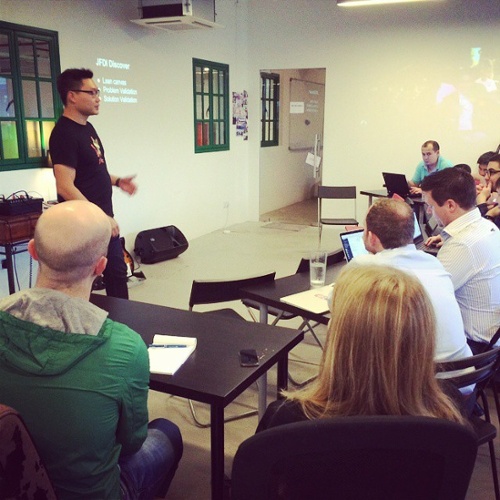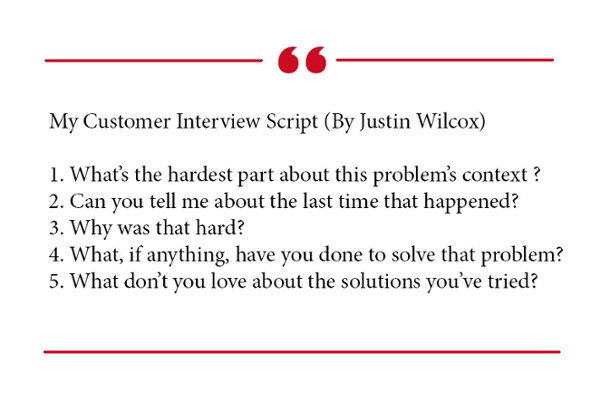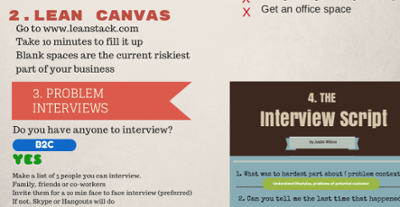I’m going to provide a quick overview of what to consider before quitting your job to pursue an idea, by Adrian Tan

Adrian teaches hundreds of startup founders in JFDI’s Discover programme
Recently, I shared my story on why my startup failed and what I learnt from it. It appears that many resonated with the article and have asked me to share practical tips on how to start validating their product idea.
#1: Remember That Startups Fail
Founders are tasked to wear many hats. They fill roles such as:
-
Anthropologist : Study and understand their potential users
-
Evangelist: Believe in their idea that is unseen and converting users
-
Scientist: Running experiments and capturing data
-
Craftsmen: Building beautiful solutions
Lean Startup author Eric Ries defines startups as “a human institution designed to deliver a new product or service under conditions of extreme uncertainty.” It’s not the long hours that makes it hard – it’s the uncertainty. You’ll be bugged with questions like, “Where do I start?,” “What do I do today?,” “What do I need to focus on?”
It is especially harder if you’re a single founder. You’ll need a team to help prepare you emotionally. Many founders will blame themselves for that. Founders will have to be prepared for an emotional rollercoaster that looks like this:
When my startup Remember failed, I went through a period of depression for about six months. I could not even set foot into Blk 71. It was too painful. Looking back, I saw that I had tied my esteem to my startup idea. It was irrational, similar to a scientist blaming himself when their experiments fail. The reality is, experiments fail all the time. But we iterate to success.
You should look at your business ideas as a hypothesis you set out to test and validate. If your hypothesis fails, you found one way of not doing things.
#2 : Remove Bias
I have met many founders who are in love with their ideas. They think about it all the time. They dream about it. But just like any romance, sometimes we are not rational critics of our own ideas. If you are a designer, it is tempting to start your high fidelity mockups. If you are a programmer, chances are you have spent your weekends building a prototype of your app. If you are a business guy, you probably have tried convincing your father-in-law to part with his retirement fund to invest in your idea.
Ideas are wonderful. But Ideas that solve problems are awesome. The ones that you want are Ideas that solve problems and are executed well. Before you run ahead and build things, you should test whether people need those ideas.
By using the lean methodology, you will be able to validate your ideas and test your assumptions first, before building anything. This minimizes waste and saves you time, money and sleep. By taking a more scientific approach to innovation, you are able to have less of an emotional attachment to your idea.
Before telling your spouse or parents that you are quitting your job to do a startup, take it as a challenge to convince them that your ideas work. If you are a single founder, taking effort to test your hypothesis will show them data that you are on to a great idea, making it easier to convince them to join your startup.
#3: Map Out Your Big Idea In 10 Minutes
The first exercise all startups should do is to fill up the lean canvas. It takes only 10 minutes but can save you months of time. You can print it out or fill it up online. I personally like to sketch out my ideas on the lean canvas.
Should you encounter difficulty in completing the task, that’s okay. It just highlights the risky aspects of your business idea for the moment. Your immediate focus is on the “Problem” aspect.
For more information on the lean canvas, Ash Maurya explains it really well in his video here.
#4: Test Your Assumptions
At this point, it is good to step away from your ideas and find out about what are the Top 3 problems faced by your potential customers right now. Justin Wilcox wrote a great article here about how to conduct problem interviews.

Force yourself to talk to five people. They can be your colleagues, family members or even complete strangers. The important thing is, you get out there talking.
BONUS: I made a cheatsheet on how to validate your idea. Click here to download.

Sneak preview of the chart – Download it for free
Summary
These are things you can do at home – in your own space and time – before plunging deep into the world of startups. Remember that startups fail, always check your bias, map out your ideas using the Lean Canvas, and test your assumptions. These are the things I wish someone told me about earlier in my journey. If you guys want get a more in-depth coaching in entrepreneurship, reach out to us at JFDI’s Discover program. You can also say Hi to me on twitter,@iadriantan.
—-
This post was written by JFDI Lean Coach Adrian Tan and edited by JFDI Social Media and Content Creator Crystal Neri.

